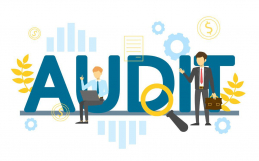Delegation by Boards of Directors
Boards and their officers often fall into habits that define the relationship between the president or CEO and the board. On occasion, these habits will drift from the requirements of the Corporations Code, and the organization is unaware of this because habits have a tendency to validate themselves.
It is important for organizations to remind themselves that all corporate powers are exercised by or under the authority of the board. Even though boards develop a mindset that certain activities of the corporation fall outside their sphere of oversight, that is never actually the case. With corporations, the buck always stops at the board.
It is inefficient for boards to manage the day to day operations of a charity for two reasons: board members only have authority to act when they do so as a body, and having bodies of people making decisions about daily operations tends to be a slow process. For these reasons, delegation to officers is not only permitted, it is very nearly a necessity.
Boards can also delegate their authority to committees of the board. Many boards are confused about this topic, as the law is complex. A “committee of the board” is a committee consisting of two or more board members. The board can delegate to such a committee much of its authority, apart from a lengthy list in the Corporations Code about matters which the board cannot delegate. But the board must be expressly clear that the committee of the board can consist solely of board members. That does not mean that non-board members are not allowed to participate actively in advising the committee and attending its meetings. However, when it comes to making a decision, a committee of the board must take a vote of the committee members only, and not count non-board members in the vote. This should be reflected clearly in minutes of the committee of the board.
Many charities have committees that have active committee members who are not board members. This is permissible. However, to the extent that non-board members are active and voting with the committee, the committee (and the board) must be clear that it is an advisory committee only. Its decisions are not binding on the board and consist only of advice that is being given to the board. Upon presentation of the advisory committee’s report to the board of directors, the board must take action before the advisory committee’s advice is an action approved by the corporation.
Note that in providing this detail, we are following California law exclusively, The law in this area varies from state to state, and in some instances is much more strict than even California in this topic.
IRS Makes Searching for Tax Records of Nonprofit Organizations Much Easier
For several years, it has been possible to get very basic information on exempt organizations using the IRS’s Select Check database. The IRS admits that the program was clunky, and it generally provided no more than assurance that an organization was exempt, sometimes. When a search came up with no results, we often assumed that the organization was not exempt, although Select Check was not very reliable.
On May 7, the IRS replaced Select Check with a new program called Tax Exempt Organization Search, or “TEOS.” The new program is far more robust, with a lot more information available. Most significantly, the IRS is now posting Form 1023 and 990 for organizations that file those documents. This will make it much easier to gather data than it has ever been in the past.
We wish we could report that TEOS works smoothly. It doesn’t. Searches by EIN are far more accurate than use of names. Even then, there are errors in the searches. But, we have hopes that it will continue to improve in the future.
It appears that the IRS’ move in this direction has led to Guidestar upping its game as well. We just saw a Form 990 appear on Guidestar’s site just four months after filing. That is considerably faster than the one to two years it used to take for Guidestar to publish the Form 990. Thanks to these changes, research is far easier than it was in the past.
One of the great advantages of this upgrade for small charities is the ability to see if the IRS has all of the Form 990-N’s that are required annually. While the data available is minimal at this point, TEOS will allow for a very quick check on the completeness of reporting at the Federal Level.
Avoid Putting Social Security Numbers on Form 990 Informational Tax Returns
Most charities, including religious charities, are required to file annual informational tax returns. These are Form 990 for the IRS, and Form 199 for the Franchise Tax Board. While these forms are roughly similar to the individual tax returns we all file each year, there are many differences.
One of the most important differences is that Form 990 and Form 199 do not ask for the Social Security Number of any individual associated with the organization. Notwithstanding that, the IRS reports that some people put their SSN’s on the forms. The informational tax returns do require the disclosure of Employment Identification Numbers, but never the SSN.
Form 990 is a public record, and it can be easily obtained from the IRS online, as well as third-party services like Guidestar. The IRS does not search the records to mask SSN’s that appear buried in the form submitted by nonprofit organizations.
Use great care in providing the IRS and FTB with everything they ask for in the annual filings, but do not provide confidential information that can create security problems later.








